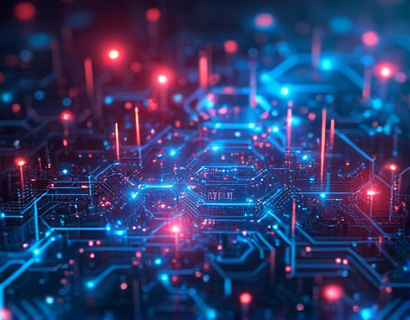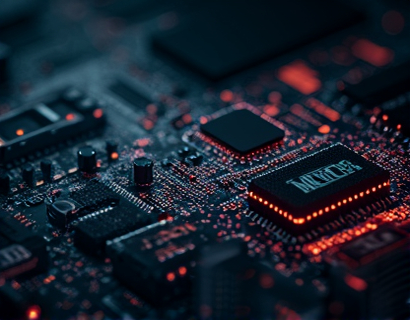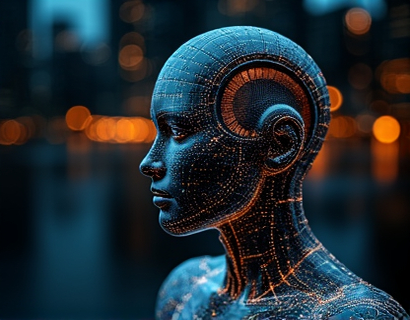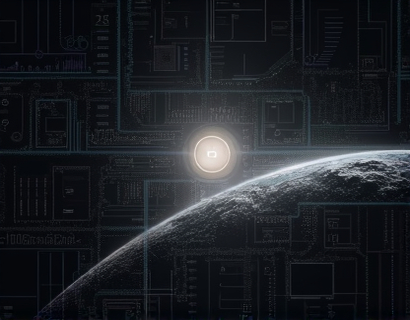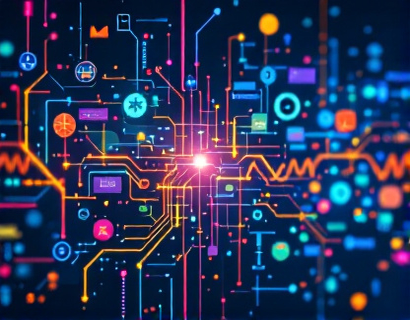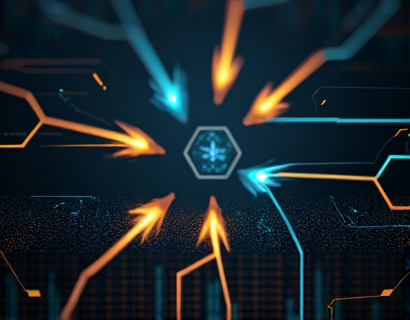Decentralized Productivity: Maximizing Efficiency with AI and Crypto in the Ucosystem
The integration of artificial intelligence (AI) and cryptocurrency is ushering in a new era of decentralized productivity, transforming the way we approach digital workflows and enhancing user experiences across various industries. This article delves into the powerful synergy between these two technologies, exploring innovative applications that are redefining efficiency and user interaction in the digital landscape.
The concept of decentralized productivity involves leveraging decentralized technologies to create more efficient, secure, and user-centric digital solutions. By combining AI's capabilities in data analysis, automation, and predictive insights with the transparency and security offered by blockchain and cryptocurrency, we can unlock new possibilities for enhancing productivity and streamlining workflows.
Understanding Decentralized Technologies
Decentralized technologies, such as blockchain, smart contracts, and decentralized applications (dApps), form the backbone of this new productivity paradigm. Blockchain, a distributed ledger technology, ensures transparency, immutability, and security in transactions and data storage. Smart contracts, self-executing contracts with the terms directly written into code, automate processes and reduce the need for intermediaries.
Decentralized applications (dApps) run on blockchain networks, providing users with greater control over their data and interactions. These applications are not controlled by a single entity, making them more resilient to censorship and downtime. The combination of these technologies creates a robust framework for building decentralized productivity tools.
AI in Decentralized Productivity
AI plays a crucial role in enhancing the functionality and user experience of decentralized productivity tools. Machine learning algorithms can analyze vast amounts of data to identify patterns, predict trends, and automate repetitive tasks. In a decentralized context, AI can be deployed to optimize resource allocation, improve security measures, and enhance user interactions.
For instance, AI-driven chatbots and virtual assistants can provide users with real-time support and guidance within decentralized applications. These AI-powered tools can understand user queries, offer personalized recommendations, and perform complex tasks with minimal human intervention. This not only improves efficiency but also enhances the overall user experience.
Case Studies: Innovative Applications
Several innovative applications are already leveraging the synergy of AI and cryptocurrency to revolutionize productivity. One notable example is decentralized cloud storage solutions that use AI to optimize data storage and retrieval. These platforms employ blockchain to ensure data integrity and security, while AI algorithms manage storage allocation and access patterns to maximize efficiency.
Another example is decentralized project management tools that utilize AI for task scheduling, resource allocation, and progress tracking. These tools can analyze historical data and predict project timelines, identify potential bottlenecks, and suggest optimal workflows. By integrating cryptocurrency, these platforms can facilitate seamless payment and reward systems, incentivizing contributors and ensuring fair compensation.
Enhancing Collaboration and Security
One of the most significant benefits of combining AI and cryptocurrency in decentralized productivity is the enhancement of collaboration and security. Decentralized platforms can foster collaborative environments where multiple parties can work together on projects without the need for central authorities. AI can facilitate seamless communication and coordination, ensuring that all participants are aligned and productive.
Security is another critical aspect. Blockchain's inherent security features, combined with AI-driven threat detection, create a robust defense against cyber threats. AI can monitor network activities in real-time, detect anomalies, and trigger security protocols to protect sensitive data and transactions. This dual approach ensures that decentralized productivity tools are both secure and efficient.
User Experience and Accessibility
The integration of AI and cryptocurrency in decentralized productivity tools also focuses on improving user experience and accessibility. AI-powered interfaces can adapt to user preferences and behaviors, providing a more intuitive and personalized experience. Voice recognition, natural language processing, and gesture-based interactions are just a few examples of how AI can make decentralized tools more user-friendly.
Moreover, cryptocurrency eliminates the need for traditional payment gateways and intermediaries, making transactions faster and more cost-effective. This is particularly beneficial for global collaborations, where users from different regions can transact seamlessly without incurring high fees or dealing with currency exchange issues.
Future Prospects and Challenges
The future of decentralized productivity looks promising, with ongoing advancements in AI and blockchain technology. As these technologies mature, we can expect more sophisticated and user-centric applications that further enhance productivity and collaboration. However, there are also challenges to address, such as scalability, regulatory compliance, and user education.
Scalability remains a key issue for blockchain networks, as they need to handle increasing amounts of data and transactions efficiently. Developers are working on layer 2 solutions and new consensus mechanisms to address these challenges. Regulatory frameworks are also evolving to accommodate decentralized technologies, ensuring that they operate within legal boundaries while fostering innovation.
User education is crucial for the widespread adoption of decentralized productivity tools. As these technologies become more complex, it is essential to provide users with the knowledge and resources to fully leverage their potential. This includes comprehensive documentation, tutorials, and community support.
Conclusion
The convergence of AI and cryptocurrency in decentralized productivity is transforming the digital landscape, offering powerful tools that enhance efficiency, security, and user experience. By leveraging the strengths of both technologies, we can create a more decentralized, collaborative, and innovative future. As the ecosystem continues to evolve, it is exciting to imagine the endless possibilities that lie ahead.




